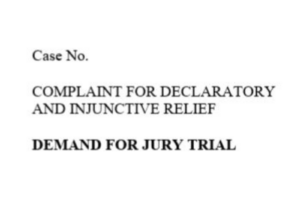Unfazed by the federal leadership vacuum on cannabis, states continue to roll out cannabis proposals and programs. A total of 34 states considered cannabis reform proposals in 2021. Another 32 proposals (some of them pre-filed in 2021) are up for discussion here in 2022. These proposals range from limited decriminalization measures to comprehensive, adult use licensing. Talk about laboratories of democracy.
I’ve spent a good deal of time noodling and directly experiencing what works and what does not in state cannabis regulation. This post gives ten recommendations for states coming online. These recommendations also apply to any state ratcheting up or retooling its cannabis regulatory model. We could go deep on any of these topics—and we have with many of them here on the blog—but this post gives a 100,000 foot overview.
1. Put social equity out in front
I list this one first because it’s so important. When a state fails to address social equity in core program architecture (and I’m not just talking expungement here), it becomes very difficult to address down the line. This is because racial minorities and victims of the War on Drugs generally fall behind at program launch. At the same time, those with privilege or access to capital are off to the races.
My home state of Oregon is an unfortunate example of this. Back in 2014, Measure 91 afforded no consideration to social equity. The legislature let it slide too, and only now is the state making very limited inroads on the problem. Other early states like Washington and Colorado similarly failed in cannabis social justice.
Recently, with more focus on the issue than ever before, vanguard jurisdictions like New York, New Jersey and Virginia seem to be building focused, social justice cannabis programs. As a result, industry in those states—including at the ownership level—may look and feel similar to the composition of their citizenries. Let’s hope so, anyway.
2. Skip the “medical marijuana” springboard
Every time I write about medical marijuana, people write me emails. Oh well. Fortunately, I’m not the only one saying these things. My colleague Griffen Thorne explained last year that:
Cannabis licensing has a pretty standard trajectory by this point in time. States tend to start out with medical programs and later adopt recreational programs. What usually happens is that the recreational cannabis market swallows up the medical market. The majority of medical operators will seek out and get authorization to sell recreational cannabis, and many if not most customers will be recreational customers.
He then proceeded to ask: “why is medical marijuana licensing even still a thing?” It’s a really good question. The answer from my perspective is that “medical” marijuana is an easier sell to voters and politicians, particularly in conservative states. However, the process by which the medical market is “swallowed up” is both awkward and inevitable. In some cases, you can see it coming years ahead. States should instead adopt omnibus, adult use programs to start, with carve-outs for medical patients (e.g. greater potency allowances; tax amnesty; veteran preferences).
3. Prohibit local licensing
I really, really dislike local licensing. Here’s an old chestnut explaining why. That particular post uses the City of Portland’s regrettable program as an example, but it could have focused on any number of jurisdictions, from Los Angeles, California to Norwell, Massachusetts. With local licensing, I explained that “everything is redundant to what the state is doing, and when it’s not, it’s usually worse.”
We have seen poorly conceived, wasteful, bureaucratic local programs harm and even sink cannabis businesses over the years. Cities and counties should consider reasonable regulation of cannabis businesses (time, place and manner ordinances), but not licensing. That should be left to the state.
24. Don’t adopt residency requirements
4. Forego residency requirements
State residency requirements for cannabis licensing are going the way of the buffalo, but a fair number of states continue to keep them around in adult use or medical programs (e.g. Washington, New Jersey, Florida). In addition to problematic dormant commerce clause considerations, these requirements incentivize all sorts of gaming and convoluted business structures under state cannabis regulation.
Residency requirements may be modestly effective in walling off larger players, but they also restrict capital from people who tend to need it. This includes the social equity applicants mentioned above, but also any number of small businesses. Query: why should a cannabis grower be barred from taking a loan from her out-of-state aunt?
5. Don’t cap the pool of licenses
This is a tough issue. I remember working on medical cannabis applications in places like Maryland seven or eight years ago where the state allotted very few licenses. Applicants had to be massively capitalized and vertically integrated. Clients had gilded resumes featuring stints in Presidential administrations and c-suite chairs in Fortune 100 companies, and applications were the size of phone books (remember phone books?). Such programs lock out everyone but the wealthiest, most privileged applicants, and create state-sanctioned oligopolies.
At the other extreme, you have your Oregons and your Oklahomas and your Californias. Here in Oregon, for example, the program ran without license caps for six years. Finally, in the face of extreme competition and rock-bottom prices, industry convinced the legislature to implement a moratorium.
So, are limits on licensure a good idea? I’ve explained:
That is a wide-ranging and controversial debate. It gets into issues like the appropriate degree of state intervention in private enterprise; protectionism more generally– including in exceptional circumstances (federal illegality; an un-exportable product); the social equity cost of creating additional barriers to entry; expectations actually and allegedly created by state actors; etc.
Overall, I’d like to see states avoid the controversies associated with picking winners, and start treating cannabis businesses similarly to other industries. It’s simpler, it’s fairer, and I’m not convinced that picking winners puts a dent in diversion. I’m also not convinced that federal prohibition necessitates such intervention.
6. Tax cannabis reasonably
Licensed cannabis businesses are heavily taxed at the federal level, due to a punitive statute called IRC § 280E. States and local jurisdictions also tax cannabis heavily, usually at the point of sale but sometimes also at other points along the supply chain (or even by product potency). These taxes are an easy sell to voters and politicians: the revenues help defray program costs, and can also be allocated to the public weal via police, schools, drug policy initiatives, etc. Most states are hungry for revenue and cannabis programs are easy money.
Because it’s so easy to tax cannabis businesses, though, states, cities and counties often overreach. When the tax burden is too high, it becomes difficult for regulated industry to complete with “traditional” markets. Legacy operators, in turn, have little interest in migrating over to the regulated space. This vexing problem is exacerbated when enforcement is lax in state cannabis regulation.
This brings us to the next section. (Yes, I’m thinking about California in all respects here.)
7. Get serious about enforcement
Before I start dumping on anyone, I’ll offer the observation that illicit cannabis activity is largely a problem of federal origin and not state cannabis regulation. Still, you cannot have a viable state market where, for example, three in four cannabis businesses are not licensed. As a business proposition, it becomes more efficient to ignore state and local laws, and continue offline in a relatively low-risk environment.
This dynamic creates a significant handicap for licensed industry and animus toward regulators. Any state rolling out a regulated cannabis program should take a hard look at law enforcement priorities and resources. Otherwise, the whole thing could tank.
8. Avoid unforced legislative errors
By now, state legislatures have passed thousands of individual laws related to regulated cannabis. Many of these laws touch on topics addressed earlier in this post, but I want to focus on two “general orientation” issues where legislatures tend to misstep.
The first is when representatives sit on their hands while a cannabis initiative or ballot measure is inevitable, missing the chance to architect the state’s cannabis regulatory program. I’ve been picking on California, so why stop now: the Golden State is a great example of this. For years and years, elected officials knew adult use legalization was imminent. Yet, the legislature did nothing about it. The mandarins sat on their hands and waited for Proposition 64, a law which ultimately passed with little input from elected officials. If anyone in Sacramento complains today about the state of that program, it’s hard to feel badly for them.
The second mistake state legislatures make is reworking passed initiatives prior to allowing those initiatives to take hold (absent other interference). In Oregon, for example, Measure 91 did not contain a residency requirement. Nor did it allow local jurisdictions to opt out of legalization. Politicians founds those features distasteful and changed them before the law took effect. Two years later, the state reversed course on residency. The opt-out stayed, however. In addition to undermining the will of the voters, this type of activity is simply chaotic. (To be fair, the legislature probably got it right in reworking M91’s tax structure. But no one voted for that, either.)
9. Think about boring business issues
There are important, mostly uncontroversial steps a state can take to ensure that its cannabis businesses have a better chance of survival. A good example concerns deductibility in taxation. Following the lead of other, forward-thinking jurisdictions, New York just passed a law allowing for state tax deduction of cannabis related business expenses which are currently disallowed by § 280E of the federal tax code. This will make a very substantial difference for licensed cannabis operators, particularly retail shops.
Other states have done things like make allowances for marijuana businesses to pay their taxes in cash, or passed laws to provide safe harbor to banks working with cannabis businesses. Some of these initiatives come at a marginal cost to the state, while others have little or no fiscal impact. The suite of proven, creative tools should not be overlooked– even on measures that may feel mostly symbolic.
10. Talk to neighbor states
In the old days, states would sue each other over cannabis legalization. Thanks goodness that’s over. Still, states have overlapping interests when it comes to cannabis programs. That may be truer out east than anywhere, where large populations are condensed in smaller geographic areas. New York, New Jersey and Connecticut, for example, are each going about cannabis legalization very differently, despite similar timelines, shared borders and the proximity of 63 million residents.
Different approaches aren’t necessarily a bad thing, especially if states do not view each other as competition. On the other hand, regulators would be remiss to ignore the reality that certain markets are more attractive to consumers than others. Basic considerations like purchasing rules, product offerings and price make it so.
Interstate cannabis commerce will happen at the consumer level whenever you have shared borders and open cannabis sales. States have also begun to consider and undertake collaborative policy on everything from regulated cannabis supply chains to cross-border trafficking. In state cannabis regulation, as anywhere, it never hurts to know your neighbors.























